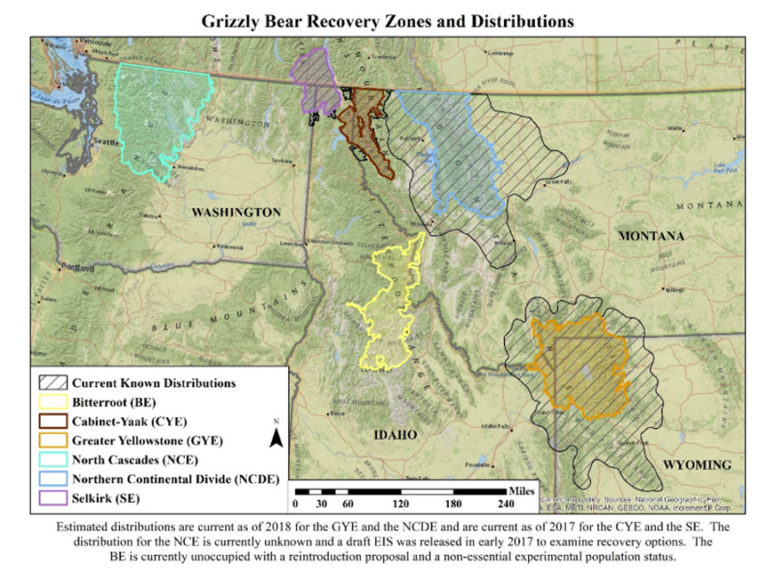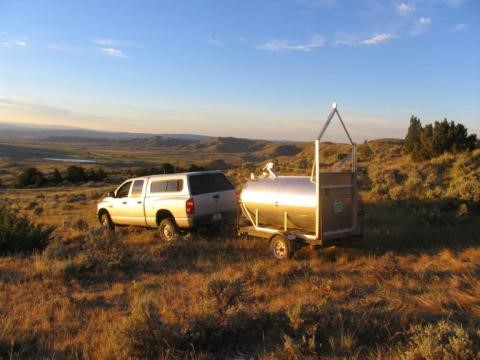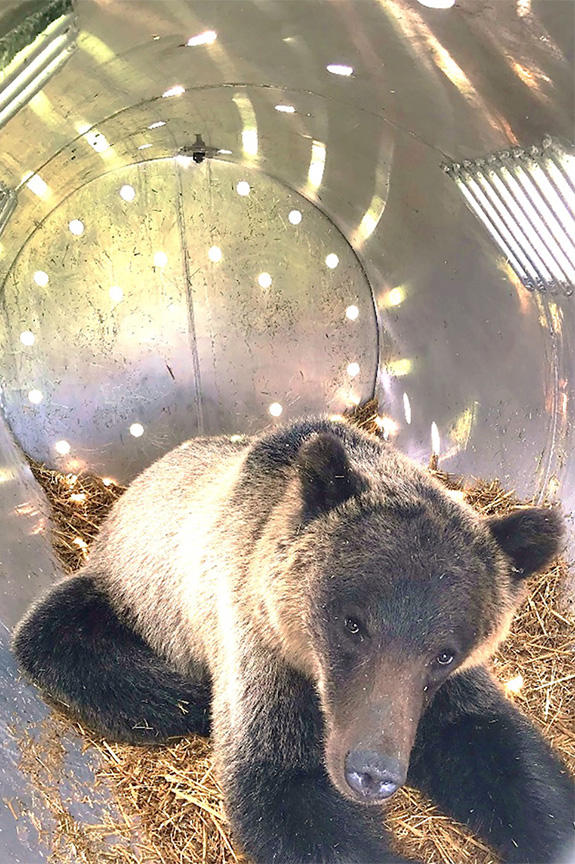SCI Foundation And Department Of Interior Focus On Reducing Human-Grizzly Bear Conflict
With grizzly bear populations expanding across Montana, Wyoming, and Idaho in recent years, conflicts with humans are becoming more and more common. In order to ensure the safety of both bears and people, improved mitigation strategies are needed to reduce the likelihood of inevitable encounters turning into fatal incidents. Safari Club International Foundation (SCIF), Montana Chapter of Safari Club International, state fish & wildlife agencies, and U.S. Fish & Wildlife Service have all taken steps in the last few months to strengthen efforts for managing this human-bear conflict.
The recovery of grizzlies in Montana, Wyoming, and Idaho is a true American conservation success story. The majority of grizzlies in the lower 48 state are found in the Northern Continental Divide Ecosystem of northwest Montana. As of 2018, there was estimated to be more than 1,000 bears in this area, where their range connects to expansive grizzly bear country in Canada. According to the USFWS 2019 Annual Report, there are more than 700 grizzlies currently roaming the Greater Yellowstone Ecosystem. More than 100 additional bears are also believed to be present in smaller fractions of Idaho and Washington.

The grizzly bear’s spot on the Endangered Species List has become one of the most polarizing, controversial, and emotional wildlife management issues today. While lawyers, judges, government agencies, and conservation groups (including SCI) fight about removing bears from the list, residents of those states are fighting to peacefully cohabitate with them.
Amidst growing concerns about human-bear conflict specifically in Montana, Secretary of the Interior David Bernhardt and Representative Greg Gianforte (R-MT) met with community leaders across the state’s grizzly range to discuss strategies for mitigating problems between people and bears. “During this meeting I heard about bears breaking into grain silos, denning in crops, and passing through school grounds. The people I met were unsettled by these interactions and felt their concerns were not being heard by the Department of the Interior and the State of Montana,” said Secretary Bernhardt.
The number of human-bear conflicts has skyrocketed in recent years. Encounters with deer and elk hunters, run-ins with roads and trains, livestock predation, and trash availability are the primary drivers, based on trends over the last two decades. Last year was the second in a row of record bear mortalities in Montana. Since 2018, there have been more than 100 bear deaths related to conflicts with people in the Northern Continental Divide Ecosystem alone, with additional conflicts elsewhere in bear country.
Meanwhile, the budget to address the root of the issue has long remained static, leaving state and federal agencies being asked to do more with less. However, after his visit in Montana, Secretary Bernhardt quickly realized that the Department of the Interior (DOI) and the USFWS could be doing more to aid with conflict mitigation efforts. In recognition of the growing need to expand resources devoted to conflict bear management, the DOI took steps to provide the U.S. Department of Agriculture’s Wildlife Services with funding to hire additional bear conflict specialists in Montana, gave the USFWS increased authority to address problem bears, and provided additional information to states about federal funding available for predator control actions. The USFWS also recently updated their bear hazing guidelines to include measures like paintball guns if problem bears come too close to homes, barns, agricultural operations, or schools.
If these deterrents or other measures are not effective or a bear exhibits a pattern of behavior that makes conflict with people or livestock likely, then bears are trapped and translocated to areas further away from human development. If one is considered to pose a threat it unfortunately must be euthanized. To aid with efforts to remove bears from potential problem areas, the Montana SCI Chapter donated a non-fatal grizzly bear trap to USDA Wildlife Services. Funding for the trap was provided in part by the SCIF conservation matching grant program.

“One of the pillars of SCI’s Foundation is wildlife conservation,” said Tex Janacek, President of the Montana SCI Chapter. “Grizzly bear-human encounters are escalating at a substantial rate, causing real problems for Montana residents and grizzly bears. As Montanans helping other Montanans, our goal with the donation of this culvert trap is to help reduce conflict between grizzly bears and humans.”
“The portability is what makes this trap so useful,” said John Steuber. “We can transport it to wherever it’s needed.” Steuber is the Montana Director and Supervisory Wildlife Biologist with the USDA Wildlife Services. He said his office will transfer each trapped bear to the USFWS and Montana Fish, Wildlife and Parks who will then decide if euthanasia or relocation of the bear is the best course of action.
SCI is involved in ongoing litigation regarding grizzly bears and the case is being heard virtually in Federal court in the coming weeks. Earlier this spring a Federal ordered the USFWS to complete a comprehensive review of grizzly bear populations in the lower 48 by March of 2021. SCI & SCIF are also engaged with the Montana Governor’s Grizzly Bear Advisory Council – a task force assembled to help address increasing conflict and management challenges with the state’s expanding grizzly bear population. SCI & SCIF will continue to remain engaged in the full spectrum of grizzly bear related issues, including scientific research, driving grassroots engagement in public comment periods for potential hunting seasons, and advocating for delisting of the bears.


